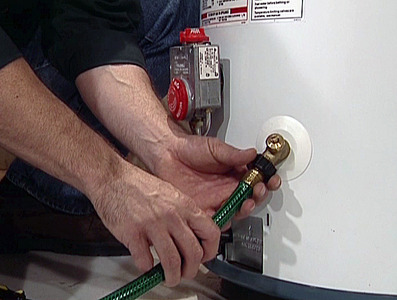 If you have a conventional water heater, chances are you have never flushed the tank. This is an essential part of plumbing maintenance that is almost always overlooked by homeowners. Flushing your water heater removes build-up of sediment, which shortens the life span of the unit. In addition, sediment build-up reduces heating efficiency which can increase your energy bill. To drain the unit, refer to the manufacturer’s instructions. If you can’t find the manual, here are the steps for draining most water heaters:
If you have a conventional water heater, chances are you have never flushed the tank. This is an essential part of plumbing maintenance that is almost always overlooked by homeowners. Flushing your water heater removes build-up of sediment, which shortens the life span of the unit. In addition, sediment build-up reduces heating efficiency which can increase your energy bill. To drain the unit, refer to the manufacturer’s instructions. If you can’t find the manual, here are the steps for draining most water heaters:
- For gas units, turn the unit’s thermostat to the pilot position, and for electric units turn the unit off at the main electrical disconnect.
- Shut off the cold water supply. This is usually a valve with a handle located in the water line above the tank.
- Attach a garden hose to the drain valve (which looks like an exterior faucet) at the bottom front of the water heater. Be sure this hose terminates at the outside of the house or at a drain.
- Open a hot-water faucet anywhere in the house to prevent a vacuum from forming in the lines.
- Open the drain valve and check the color of the water coming out of the end of the hose. At first the water may be orange or brown.
- Once the water coming out of the end of the hose looks clear, shut off the drain valve, turn off the hot water tap in the house, and turn the main cold water supply line back on.
- For gas units you can set the thermostat back to the desired heat, and for electric units you can turn the power back on.
The average residential water heater tank holds 40 gallons. In most cases you don’t need to drain the entire tank, just several gallons. Make sure the hose terminates to the outside or to a drain.
